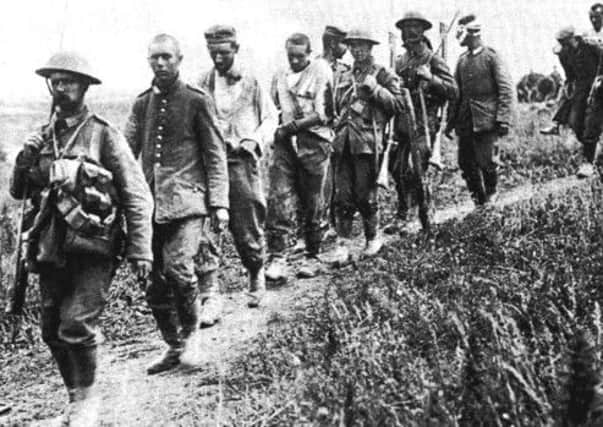Tragedy of Kilsyth’s Great War


It details in sometimes heartbreaking detail how a generation of local men fought the First World War – focusing particularly on the 7th (Territorial) Battalion of the Argyll and Sutherland Highlanders.
Many other famous units figure too, for example the legendary Black Watch, the Gordons and the rest.
Advertisement
Hide AdAdvertisement
Hide AdThen there are characters like the coal miner who served in the Navy in 1914-18 then volunteered for service in the Second World War too.
The Highland regiments (whose personnel were not necessarily Highland) were the shock troops of the British Army, and often suffered staggering losses in consequence.
In a book packed with images culled from many different sources, including his personal collection, the author sets out to relate in no-nonsense terms how Kilsyth’s men went to war along with comrades from across Stirlingshire, Dunbartonshire and Argyll.
In the year which marks the centenary of the outbreak of war it is arguably an indispensable guide for anyone trying to gain an understanding of how the holocaustal butchery on the Western Front and elsewhere impacted on normal life in ordinary Scottish communities.
Advertisement
Hide AdAdvertisement
Hide AdThe narrative is no dispassionate account of battles and troop manoeuvres, and from his first few introductory paragraphs Mr Chalmers leaves the reader in no doubt about his own revulsion at what he sees as the idiocy, hypocrisy and waste of a conflict in which opposing troops were happy to play football with one another when their officers weren’t ordering them to commit mass murder.
The prose account of the conflict is compelling, but it is the photography that brings the whole subject alive.
The individuals who feature are the great-grandfathers of people living in Kilsyth or Cumbernauld today, with names that have been linked to the area for many generations.
With horrifying frequency their families received news of disaster in a “death telegram”, which was edged in black – meaning its contents were all too obvious even before it was opened.
Advertisement
Hide AdAdvertisement
Hide AdThe book’s text sparkles with pride and honest admiration for what ordinary men were capable of enduring, and of the help they selflessly gave each other – but savages society’s upper echelons for the casual idiocy of orders which regularly condemned thousands to frequently agonising and often pointless deaths.
There are countless thousands of books about the Great War, but as an exercise in how the global conflict impacted on the life of a familiar community this one is in a league of its own.
The narrative is full of anger but also humanity, and because the men involved in the story are “familiar” - people who, even after a century, are very easy to relate to – the impact of their experience, capably told, is all the greater.
This book is one that should be owned by anyone in Kilsyth or Cumbernauld who has even a passing interest in the events of 1914 - 1918.